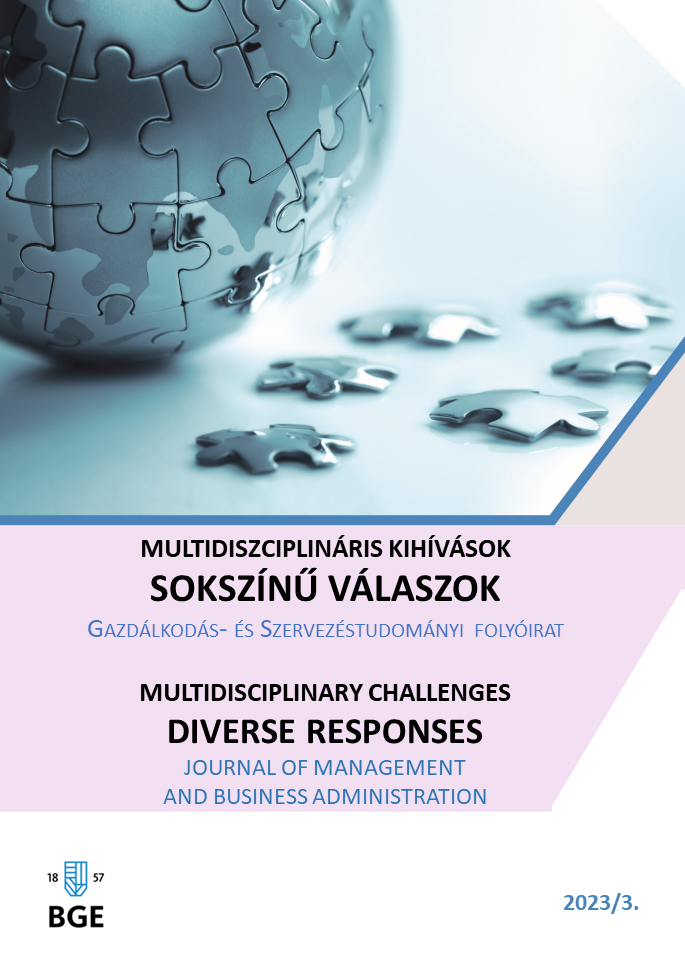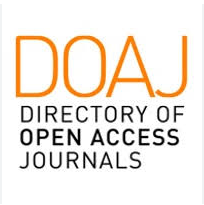Repositioning in International Student Flow - A Network Analysis Approach
Abstract
International student flows, which study the cross-border movement of students for educational purposes, is a dynamically developing field of research. The aim of our research is to identify the central actors among the receiving and sending countries participating in student mobility based on various central indicators, and our aim is to identify the groups or clusters and their composition between the countries that appear in the network. The research is looking for an answer to the question of which of the receiving and sending states participating in international student mobility have a central role in the network. Our further research question: What structure and composition of clusters can be identified in the network? During our investigation, we use the methods of network analysis and graph theory. The results of our study confirmed the central role of the United States, the United Kingdom, France and Germany, which had already been highlighted in previous literature. However, this study provides two novel insights into the topic of international student mobility, which previous studies have not yet addressed. Our first result is that we have identified the composition of clusters between states participating in student mobility. Our second result is that we conducted an investigation and identified the central countries based on the weighted indegree and weighted outdegree indicators. In the course of subsequent research, it is worthwhile to examine the dynamics of the changing role of regional hubs. Therefore, it is advisable to compare the data of several periods and create a dynamic network using graph theory. In connection with this, we can perform analyzes not only on the change in the role of regional nodes, the so-called "hubs", but also on the development of emerging regional hubs (emergent regional hubs/ERG).
References
Altbach, P. G., 2004. Globalization and the university myths and realities in an unequal world. Tertiary Education and Management, 10, 3–25. https://doi.org/10.1023/B:TEAM.0000012239.55136.4b
Barnett, G.A., Lee, M., Jiang, K. & Park, H., 2015. The flow of international students from a macro per-spective: A network analysis. Compare: A Journal of Comparative and International Education, 46(4), 533–559. https://doi.org/10.1080/03057925.2015.1015965
Bastian, M., Heymann, S. & Jacomy, M., 2009. Gephi: an open source software for exploring and manipulating networks. https://doi.org/10.1609/icwsm.v3i1.13937
Blondel, V., Guillaume, J.L., Lambiotte, R. & Mech, E., 2008. Fast unfolding of communities in large networks. Journal of Statistical Mechanics: Theory and Experiment, 2008(10), P10008, 12 pp. https://doi.org/10.1088/1742-5468/2008/10/P10008
Bracht, O., Engel, C., Janson, K., Over, A., Schomburg, H. & Teichler, U., 2006. The professional value of Erasmus mobility. International Centre of Higher Education Research, University of Kassel, INCHER: Kassel. Germany: Final Report, International Centre for Higher Education Research, http://ec.europa.eu/education/programmes/socrates/ERASMUS/evalcareer.pdf, https://www2.uned.es/ciencias/erasmus-fisica/documentos/InformeImpacto_MovilidadErasmus.pdf
Byram, M. & Dervin, F., 2009. Students, staff and academic mobility in higher education. Cambridge Scholars Publishing, Cambridge. https://core.ac.uk/download/pdf/11040421.pdf
Cantwell, B., Marginson, S. & Smolentseva, A., 2018. High participation systems of higher education. Oxford University Press: 496. https://doi.org/10.1093/oso/9780198828877.003.0001
Castells, M., 2000. Materials for an exploratory theory of the network society. The British Journal of Sociology. 51, 5–24. https://doi.org/10.1111/j.1468-4446.2000.00005.x
Chen, T.M. & Barnett, G.A., 2000. Research on international student flows from a macro perspective: a network analysis of 1985, 1989 and 1995. Higher Education, 39(4), 435–453. https://doi.org/10.1023/A:1003961327009
Choudaha, R., 2012. The rise of 'glocal' students and transnational education. Support the Guardian. https://www.theguardian.com/higher-education-network/blog/2012/jun/21/opportunities-in-transnational-education
Choudaha, R., 2017. Three waves of international student mobility (1999–2020). Studies in Higher Education, 42(5), 825–832. https://doi.org/10.1080/03075079.2017.1293872
De Wit, H., 2011. Student Mobility between Europe and the rest of the world: trends, issues and challenges [PowerPoint slides]. Future of Higher Education – Bologna Process Researchers Conference. Bukarest, 17-19. October 2011. http://fohe-bprc.forhe.ro/old/2011/templates/pdf/Mobility/5_FOHE-BPRC%20Bucharest%202011%20Hans%20de%20Wit.pdf
Fernex, A., de Vries, E., & Lima, L., 2016. Articulating perspectives on international and social mobility in higher education. European Journal of Higher Education, 7 (1), 3-14. https://doi.org/10.1080/21568235.2017.1265740
Glass, C.R. & Cruz, N.I., 2023. Moving towards multipolarity: shifts in the core-periphery structure of international student mobility and world rankings (2000–2019). Higher Education, 85, 415-435. https://doi.org/10.1007/s10734-022-00841-9
Honvári, J., 2012. Migrációs potenciál és a potenciális tanulási migráció. Hazai hallgatók külföldi tanulási szándékai. Tér és Társadalom, 26 (3), 93-113. https://doi.org/10.17649/TET.26.3.2058.
Hou, C. & Du, D., 2020. The changing patterns of international student mobility: a network perspective, Journal of Ethnic and Migration Studies, 48(1), 248–272. https://doi.org/10.1080/1369183X.2020.1797476
Janik, H. & Naárné Tóth, Zs., 2021a. A Stipendium Hungaricum program szerepe a magyar agrár-felsőoktatás nemzetköziesítésében=The Role of the Stipendium Hungaricum Program in the Internationalisation of Hungarian Agricultural Higher Education. Külügyi Szemle, 20 (4). 184-202. https://doi.org/10.47707/Kulugyi_Szemle.2021.4.8
Janik, H. & Naárné Tóth, Zs., 2021b. Macroeconomic indicators and student mobility: a case study of the African countries most actively involved in FAO student mobility, Economic Annals XXI. Vol. 190 (5-6(2)), 75–85. https://doi.org/10.21003/ea.V190-07
King, R., & Raghuram, P., 2013. International student migration: Mapping the field and new research agendas. Population, Space, and Place, 19(2), 127–137. https://doi.org/10.1002/psp.1746
King, R. & Ruiz-Gelices, E., 2003. International student migration and the European ‘year abroad’: Effects on European identity and subsequent migration behaviour. International Journal of Population Geography, 3, 229-252. https://doi.org/10.1002/ijpg.280
Kolnhofer-Derecskei, A., 2022. How did the COVID-19 restrictions impact higher education in Victoria? Multidiszciplináris kihívások, sokszínű válaszok - Gazdálkodás- és Szervezéstudományi folyóirat 50-72. https://doi.org/10.33565/MKSV.2022.01.03
Kondakci, Y., Bedenlier, S., & Zawacki-Richter, O., 2018. Social network analysis of international student mobility: Uncovering the rise of regional hubs. Higher Education, 75(3), 517-535. https://doi.org/10.1007/s10734-017-0154-9
Kovács, V. I. & Tarrósy, I., 2017. Internationalisation of higher education in a global world In: Egetenmeyer, R., Guimarães, P., Németh, B. (Eds.): Joint Modules and Internationalisation in Higher Education. Reflections on the Joint Module Comparative Studies in Adult Education and Lifelong Learning. Peter Lang International Academic Publishers, 39-52. https://library.oapen.org/handle/20.500.12657/27245
Lakner, Z., Kiss, A., Merlet, I., Oláh, J., Máté, D., Grabara, J. & Popp, J., 2018. Building Coalitions for a Diversified and Sustainable Tourism: Two Case Studies from Hungary. Sustainability, 10, P1090. https://doi.org/10.3390/su10041090
Larsen, M.A., 2016. Internationalization of Higher Education: An Analysis through Spatial, Network, and Mobilities Theories; Palgrave Macmillan: New York, USA. 196 pp.
Madleňák, R., D’Alessandro, S.P., Marengo, A., Pange, J. & Neszmélyi, G.I., 2021. Building on Strategic eLearning Initiatives of Hybrid Graduate Education a Case Study Approach: MHEI-ME Erasmus+ Project. Sustainability 13, 7675–7675. https://doi.org/10.3390/su13147675
Muchiri, M. K., Erdei-Gally, S., Fekete-Farkas, M. & Lakner, Z., 2022. Bibliometric Analysis of Green Finance and Climate Change in Post-Paris Agreement Era. Journal of Risk and Financial Management, 15(12), 561. https://doi.org/10.3390/jrfm15120561
OECD, 2015. Education at glance 2015: OECD indicators. OECD Publishing. https://doi.org/10.1787/eag-2015-en
Popp, J., Kovács, S., Oláh, J., Divéki, Z. & Balázs, E., 2021. Bioeconomy: Biomass and biomass-based energy supply and demand. New Biotechnology, 60, 76-84. https://doi.org/10.1016/j.nbt.2020.10.004
Quijano, A., 2007. Coloniality and modernity/rationality. Cultural Studies, 21(2-3), 168–178. https://doi.org/10.1080/09502380601164353
Richters, E. & Teichler, U., 2006. Student mobility data: Current methodological issues and future prospects. In Kelo M., Teichler U., Wächter B. (Eds.), EURODATA: Student Mobility in European Higher Education, pp. 78-95. Bonn: Lemmens Verlag & Mediengesellschaft.
Sassen, S., 1996. Losing control? Sovereignty in an age of globalization. University seminars/Leonard Hastings Schnoff memorial lectures. Columbia University Press. NY, US.
Sin, C., Tavares, O., Aguiar, J. & Amaral, A., 2022. More students and more diverse: new trends in international mobility to Portugal. Tertiary Education and Management, 28, 135-153. https://doi.org/10.1007/s11233-022-09090-y
Teichler, U., 2003. Mutual recognition and credit transfer in Europe: Experiences and problems. Journal of Studies in International Education. 7(4), 312-341. https://doi.org/10.1177/10283153032571
UNESCO 2020. Global flow of tertiary-level students. UNESCO Institute for Statistics, http://uis.unesco.org/en/
Vinogradov, Sz., 2020. A nemzeti versenyképesség puha tényezői, a társadalmi versenyképesség, In: Csath, M. (Eds.): Versenyképesség: új elméleti és módszertani közelítések, Dialóg Campus Kiadó, 109-138. http://hdl.handle.net/20.500.12944/16023
Wallerstein, I., 2004. World-systems Analysis. Duke University Press. P128. https://doi.org/10.2307/j.ctv11smzx1
Wasserman, S. & Faust, K., 1994. Social network analysis: Methods and applications. Cambridge University Press. https://doi.org/10.1017/CBO9780511815478
Waters, J.L., 2012. Geographies of international education: Mobilities and the reproduction of social (dis)advantage. Geography Compass, 6(3), 123–136. https://doi.org/10.1111/J.1749-8198.2011.00473.X
Whatley, M. & Castiello-Gutiérrez, S., 2021. Balancing finances, politics, and public health: International student enrollment and reopening plans at US higher education institutions amid the COVID-19 pandemic. Higher Education. https://doi.org/10.1007/s10734-021-00768-7
Wilkins, S., Balakrishnan, M.S. & Huisman, J., 2012. Student choice in higher education: Motivations for choosing to study at an international branch campus, Journal of Studies in International Education, 16(5), 413-433. https://doi.org/10.1177/1028315311429002
Wu, D.B. & Hou, S., 2022. International student mobility as “aspiration on the go”: stories from African students at a Chinese university. Higher Education. https://doi.org/10.1007/s10734-022-00864-2
Wu, S.J., Chang, D. F., & Sun, F.R., 2020. Exploring College Student’s Perspectives on Global Mobility during the COVID-19 Pandemic Recovery. Education Sciences, 10(9), 218. MDPI AG. http://dx.doi.org/10.3390/educsci10090218
Yao, C.W., 2021. Global positional competition and interest convergence: Student mobility as a commodity for U.S. academic imperialism. In J.J. Lee’s (Eds.), Critical International Higher Education and Power: How US Internationalization is Not Neutral. New Brunswick, NJ: Rutgers University Press.


























